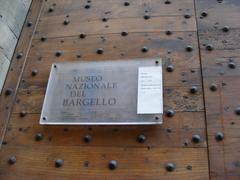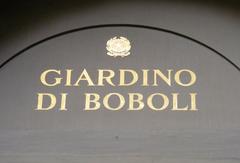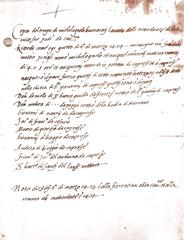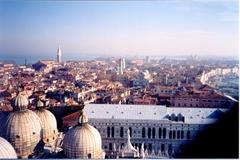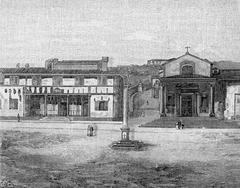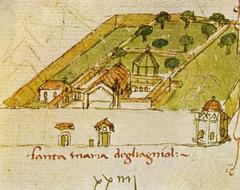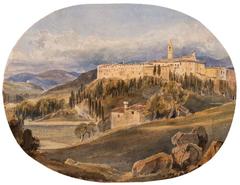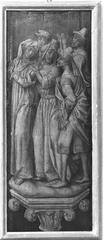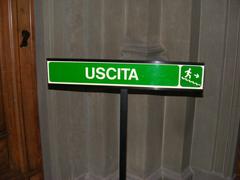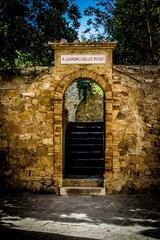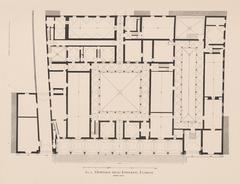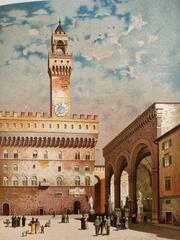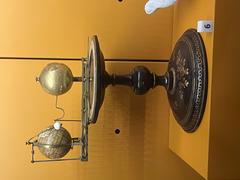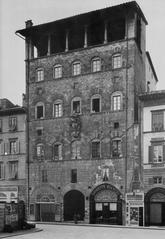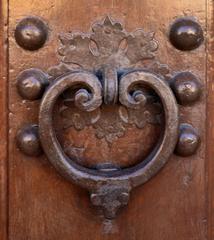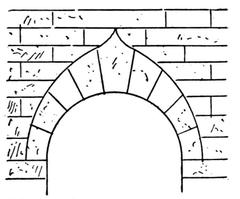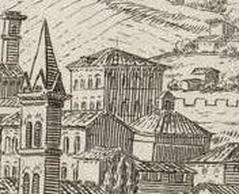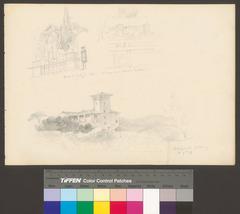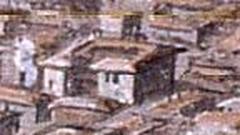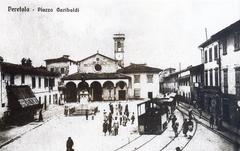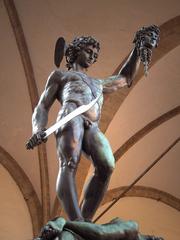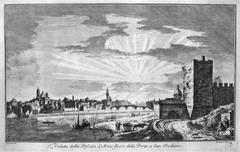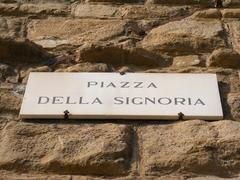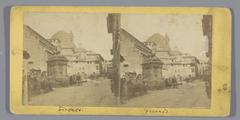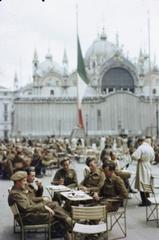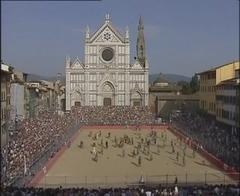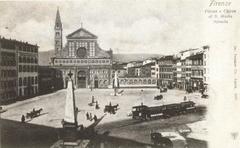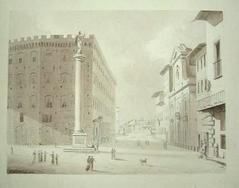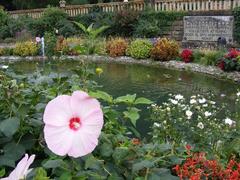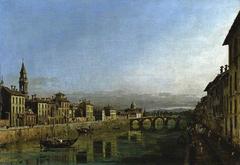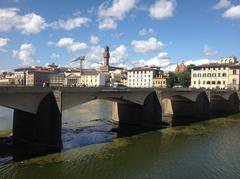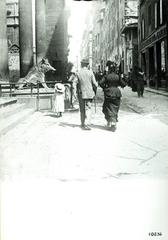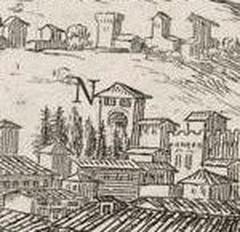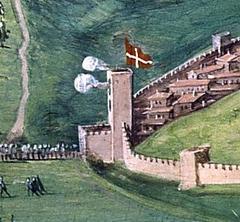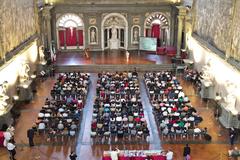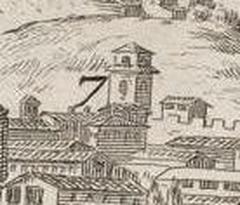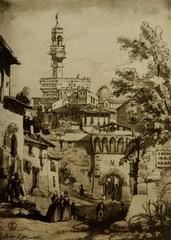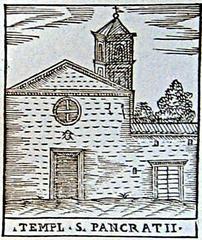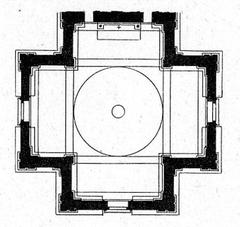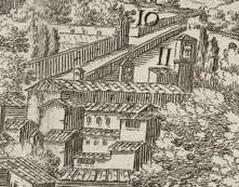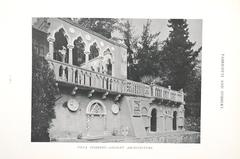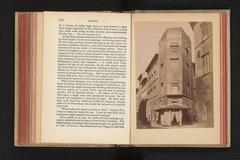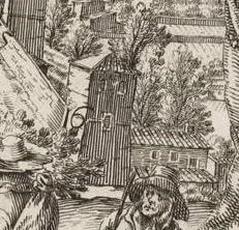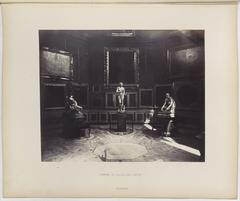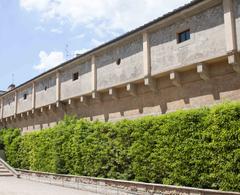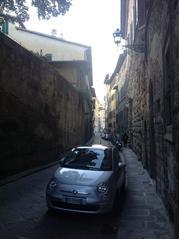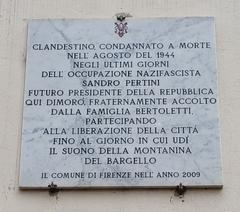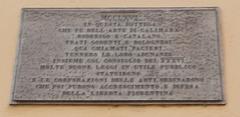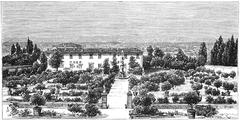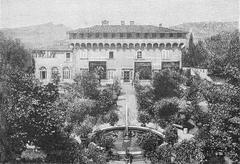
Comprehensive Guide to Visiting Palazzo Pretorio, Florence, Italy
Date: 19/07/2024
Introduction
Palazzo Pretorio, situated in the vibrant heart of Florence, Italy, is a historical monument that offers a captivating journey through the city’s rich medieval and Renaissance heritage. Constructed in 1232, this architectural marvel initially served as the residence and office of the Podestà, the chief magistrate of Florence. The building’s strategic location, near other significant civic structures like the Palazzo Vecchio, and its fortified design reflect its vital role in symbolizing the power and authority of the city’s governance (Florence Art Guide). Over the centuries, Palazzo Pretorio has undergone numerous architectural modifications, evolving from a simple, fortified structure into a more elaborate and functional civic building adorned with coats of arms and other symbols of Florence’s power (Visit Tuscany). Today, Palazzo Pretorio stands as a well-preserved testament to Florence’s historical and cultural significance, housing a museum and cultural center that attracts visitors from around the world. This comprehensive guide aims to provide detailed information on visiting hours, ticket prices, architectural features, and travel tips to ensure a memorable and enriching experience at Palazzo Pretorio.
Table of Contents
- Origins and Early History
- Architectural Evolution
- Role in Florentine Governance
- Decline and Restoration
- Modern Use and Significance
- Visitor Tips
- Frequently Asked Questions (FAQ)
- Stay Up to Date
Exploring Palazzo Pretorio - History, Visiting Hours, and Tickets in Florence
Origins and Early History
Palazzo Pretorio, located in the heart of Florence, Italy, has a rich history that dates back to the 13th century. Originally constructed in 1232, the building served as the residence and office of the Podestà, the chief magistrate of Florence. The Podestà was a crucial figure in the medieval governance of the city, responsible for maintaining law and order. The building’s initial purpose was to symbolize the power and authority of the Podestà, and it was strategically located near other significant civic buildings, including the Palazzo Vecchio.
Architectural Evolution
Over the centuries, Palazzo Pretorio underwent several architectural modifications. The original structure was a simple, fortified building, but as Florence grew in wealth and importance, so did the need for more elaborate and functional civic buildings. In the 14th century, the building was expanded and renovated to include more administrative offices and living quarters. The façade was adorned with coats of arms and other symbols of the city’s power, reflecting the evolving architectural styles of the period.
In the 15th century, the building was partially reconstructed to include a more ornate façade and additional floors. This period also saw the addition of a loggia, which provided a covered area for public gatherings and announcements. The loggia became a focal point for civic life in Florence, hosting various public events and ceremonies.
Role in Florentine Governance
Throughout its history, Palazzo Pretorio played a central role in the governance of Florence. During the 14th and 15th centuries, the building housed various administrative offices, including those of the Podestà, the Capitano del Popolo (Captain of the People), and other magistrates. These officials were responsible for enforcing the laws, collecting taxes, and overseeing public works. The building also served as a courthouse, where trials and legal proceedings were conducted.
In the 16th century, the role of Palazzo Pretorio began to change as Florence underwent significant political transformations. The rise of the Medici family and the establishment of the Grand Duchy of Tuscany shifted the center of power away from the traditional civic institutions. Palazzo Pretorio continued to serve as an administrative building, but its importance diminished as the Medici centralized their power in the Palazzo Pitti and other grand residences.
Decline and Restoration
By the 18th century, Palazzo Pretorio had fallen into disrepair. The building’s once-grand façade was crumbling, and many of its interior spaces were no longer in use. However, the 19th century brought a renewed interest in Florence’s medieval and Renaissance heritage, leading to efforts to restore and preserve the city’s historic buildings.
In the late 19th and early 20th centuries, Palazzo Pretorio underwent extensive restoration work. The goal was to return the building to its former glory while adapting it for modern use. The restoration efforts focused on preserving the building’s architectural features, including its loggia, coats of arms, and decorative elements. Today, Palazzo Pretorio stands as a testament to Florence’s rich history and architectural heritage.
Modern Use and Significance
In recent years, Palazzo Pretorio has been repurposed to serve as a museum and cultural center. The building now houses various exhibitions and collections that highlight Florence’s history, art, and culture. Visitors can explore the building’s historic rooms, view artifacts from different periods of Florentine history, and learn about the city’s governance and civic life.
One of the most notable features of Palazzo Pretorio is its collection of coats of arms, which adorn the building’s façade and interior spaces. These coats of arms represent the various families and officials who played a role in Florence’s history, providing a visual record of the city’s complex social and political landscape.
Visitor Tips
Opening Hours and Ticket Prices
Check the official website for the most up-to-date information on opening hours and ticket prices. The museum is typically open from Tuesday to Sunday, with extended hours during the summer months.
Guided Tours
Consider joining a guided tour to gain deeper insights into the building’s history and significance. Many tours are available in multiple languages and provide a comprehensive overview of the site’s historical context.
Accessibility
The building is equipped with modern amenities to accommodate visitors with disabilities. Elevators and ramps are available to ensure that all areas of the museum are accessible.
Photography
Photography is generally allowed, but be sure to check for any restrictions, especially in areas with sensitive artifacts or temporary exhibitions.
Nearby Attractions
Palazzo Pretorio is located near other significant landmarks, including the Palazzo Vecchio, the Uffizi Gallery, and the Florence Cathedral. Plan to visit these sites as part of a broader exploration of Florence’s historic center.
Frequently Asked Questions (FAQ)
What are the visiting hours for Palazzo Pretorio?
The museum is typically open from Tuesday to Sunday. For the most accurate and up-to-date information, please refer to the official website.
How much do tickets to Palazzo Pretorio cost?
Ticket prices can vary. Check the official website for the latest pricing information.
Are guided tours available?
Yes, guided tours are available in multiple languages and provide a comprehensive overview of the building’s history and significance.
Is Palazzo Pretorio accessible for visitors with disabilities?
Yes, the building is equipped with modern amenities such as elevators and ramps to ensure accessibility for all visitors.
Stay Up to Date
For more information, visit the official website of Palazzo Pretorio. Download our mobile app Audiala for more updates, and follow us on social media to stay informed about upcoming events and new exhibitions. Explore related posts on our site for a deeper dive into Florence’s rich history and cultural heritage.
Conclusion
In conclusion, Palazzo Pretorio is not just a historical monument but a vivid encapsulation of Florence’s rich heritage and architectural grandeur. From its origins in the 13th century as the residence of the Podestà to its current role as a museum and cultural center, the building has witnessed and adapted to the city’s evolving political, social, and cultural landscape. Whether it’s the captivating frescoes, the collection of coats of arms, or the grand halls that once echoed with the decisions of medieval magistrates, every corner of Palazzo Pretorio offers a unique glimpse into Florence’s storied past. Visitors are encouraged to explore this magnificent site, taking advantage of guided tours and special events to deepen their understanding and appreciation of Florence’s historical and artistic legacy. For the most up-to-date information on visiting hours, ticket prices, and special events, refer to the official website. Palazzo Pretorio is more than just a building; it is a gateway to experiencing the medieval and Renaissance splendor of one of Italy’s most iconic cities.

